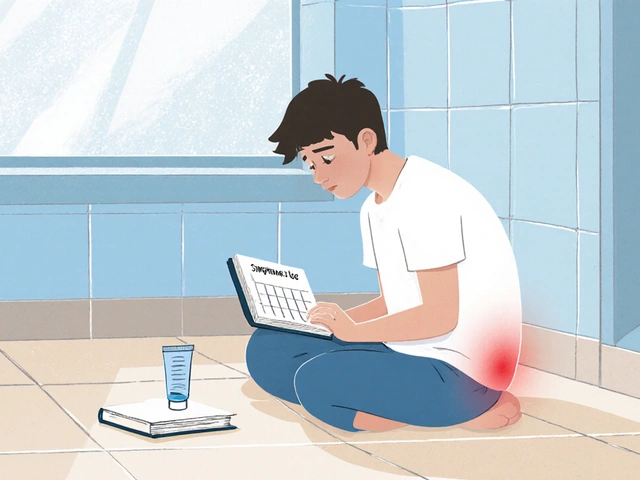1. The Impact of Wearable Technology on Parkinson's Disease Management
In recent years, wearable technology has emerged as a powerful tool to help those suffering from Parkinson's disease. These devices, which include smartwatches, fitness trackers, and sensors, can monitor various aspects of a patient's health, such as heart rate, sleep patterns, and physical activity. This information can be easily accessed by both patients and healthcare professionals, allowing for better management of the disease and more personalized treatment plans.
Moreover, some wearables also come with specialized features to address specific symptoms of Parkinson's. For instance, there are devices that provide gentle vibrations to help counteract the tremors commonly associated with the disease. Others can detect and record episodes of freezing, a phenomenon where a patient's movement suddenly stops, which can be useful in tracking the progression of the illness and adjusting treatment accordingly. Overall, wearable technology has proven to be a valuable asset in managing Parkinson's disease and improving the quality of life for those affected.
2. Telemedicine: Revolutionizing Access to Parkinson's Care
Telemedicine has made a significant impact on the way healthcare is delivered, particularly for patients with Parkinson's disease. This technology allows patients to consult with their healthcare providers remotely, using video conferencing tools and other digital platforms. This has several benefits, especially for those living in rural areas or with limited mobility, as they no longer need to travel long distances for appointments.
Telemedicine also allows for more frequent check-ins with healthcare providers, enabling better monitoring of a patient's condition and more timely adjustments to their treatment plan. Additionally, telemedicine can facilitate access to Parkinson's specialists who may not be available in a patient's local area, ensuring they receive the best care possible. By bridging the gap between patients and healthcare professionals, telemedicine is revolutionizing Parkinson's care and making it more accessible to all.
3. Deep Brain Stimulation: A High-Tech Approach to Parkinson's Treatment
Deep Brain Stimulation (DBS) is a surgical procedure that involves implanting electrodes into specific areas of the brain that control movement. These electrodes are connected to a small device, similar to a pacemaker, which delivers electrical impulses to the brain. This helps regulate the abnormal neural activity that causes the motor symptoms of Parkinson's disease, such as tremors, stiffness, and slowed movement.
DBS has proven to be an effective treatment option for many patients who have not responded well to medication-based therapies. Furthermore, advancements in technology have made the procedure safer and more precise, minimizing the risks associated with surgery. As research continues and our understanding of the brain deepens, it is likely that DBS will become an even more crucial tool in the management and treatment of Parkinson's disease.
4. Mobile Applications for Parkinson's Disease: Empowering Patients
Smartphone applications have become an essential part of our daily lives, and their potential to assist in the management of Parkinson's disease is immense. There are numerous apps available that cater specifically to the needs of Parkinson's patients, offering a range of features such as medication reminders, symptom tracking, and exercise guidance.
These apps can be an invaluable resource for patients, helping them to take control of their disease and maintain their independence. Additionally, the data collected by these apps can be shared with healthcare providers, enabling them to better understand a patient's condition and tailor their treatment accordingly. As technology continues to advance and the capabilities of these apps expand, they will undoubtedly play a significant role in the ongoing management and treatment of Parkinson's disease.
5. Virtual Reality for Parkinson's Rehabilitation
Virtual reality (VR) technology has shown great promise in the field of rehabilitation for Parkinson's disease. VR systems can create immersive, interactive environments that provide patients with a safe and engaging space to practice and improve their motor skills. These systems can be tailored to suit each individual's needs and abilities, allowing for a personalized approach to rehabilitation.
Research has demonstrated that VR-based therapy can lead to significant improvements in balance, gait, and overall motor function in Parkinson's patients. Furthermore, the engaging nature of VR can help to motivate patients to adhere to their rehabilitation programs, increasing the likelihood of long-term success. As VR technology becomes more accessible and affordable, it is likely to play an increasingly important role in Parkinson's rehabilitation.
6. The Role of Artificial Intelligence in Parkinson's Research and Treatment
Artificial intelligence (AI) has the potential to revolutionize the way we approach Parkinson's disease research and treatment. AI algorithms can analyze vast amounts of data at an unprecedented speed, allowing researchers to identify patterns and trends that may have been previously overlooked. This can lead to new insights into the underlying mechanisms of the disease, as well as the discovery of novel treatment options.
Additionally, AI can assist in the development of personalized treatment plans for Parkinson's patients, by analyzing an individual's specific symptoms, medical history, and other factors. This can result in more targeted and effective therapies, ultimately improving patient outcomes. As AI technology continues to advance, its impact on Parkinson's disease research and treatment will only grow.
7. The Future of Parkinson's Disease Management and Treatment
The ongoing development of technology holds great promise for the future of Parkinson's disease management and treatment. As we continue to explore the potential of wearable devices, telemedicine, deep brain stimulation, mobile applications, virtual reality, and artificial intelligence, it is clear that these advancements will play a crucial role in shaping the future of Parkinson's care.
By harnessing the power of technology, we can work towards more accurate diagnoses, more effective treatments, and ultimately, a better quality of life for those living with Parkinson's disease. As we continue to push the boundaries of what is possible, there is hope that one day we may even find a cure for this debilitating condition.







Wayne Keller
June 13, 2023 AT 07:24Wearables aren't magic, but they're the closest thing we've got to a 24/7 care team.
Shana Labed
June 14, 2023 AT 22:45SHE'S BEEN LAUGHING FOR THE FIRST TIME IN YEARS. THIS ISN'T JUST MEDICINE-IT'S JOY. WE NEED TO FUND THIS LIKE IT'S A SUPERHERO MOVIE. #ParkinsonsTechRevolution
California Daughter
June 15, 2023 AT 22:53When did we stop trying to cure, and start just... monitoring?
Also, 'wearables'? That's not tech-that's a glorified Fitbit with a PR team.
Vishwajeet Gade
June 16, 2023 AT 17:51Also, AI is 10x better than Indian doctors who still write prescriptions on napkins.
Norman Rexford
June 18, 2023 AT 06:17Maybe we're treating symptoms so hard we forget the soul behind them. Just sayin'.
Casey Crowell
June 18, 2023 AT 15:52My uncle used to hide in his room because he couldn't walk without freezing. Now he uses a vibro-glove and dances with my niece every Sunday. That’s not a device-that’s a miracle with a battery.
Also, AI is basically the universe whispering, 'Hey, you got this.'
Shanna Talley
June 20, 2023 AT 03:17My mom's app reminds her to drink water. That's it. But that one thing? It keeps her out of the hospital. Simple tools, big impact.
We don't need to overcomplicate healing. Just show up. And let tech help you do it better.